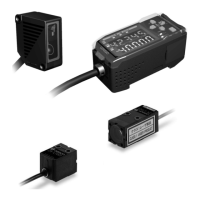29
ZX SERIESZX SERIES
■ Laser Product Classifications
EN
Note: Conditions for safe viewing of diffuse reflections for Class 3B visible lasers are: minimum viewing distance of 13 cm between
screen and cornea and a maximum viewing time of 10 s. Other viewing conditions require a comparison of the diffuse reflection
exposure with the MPE.
Comparison of Classifications between FDA and ANSI
■ Label Indications
EN
Note: Use of controls, adjustments, or procedures other than those specified herein may result in hazardous radiation exposure.
Class Description
Class 1 Lasers which are safe under reasonably foreseeable conditions of operation.
Class 2 Lasers emitting visible radiation in the wavelength range from 400 nm to 700 nm. Eye protection is normally afforded
by aversion responses including the blink reflex.
Class 3A Lasers which are safe for viewing with the unaided eye. For laser emitting in the wavelength range from 400 nm to
700 nm, protection is afforded by aversion responses including the blink reflex. For other wavelengths the hazard
to the unaided eye is no greater than for Class 1. Direct intrabeam viewing of Class 3A lasers with optical aides (e.g.,
binoculars, telescopes, microscopes) may be hazardous.
Class 3B Direct intrabeam viewing of these lasers is always hazardous. Viewing diffuse reflections is normally safe (See
Note).
Class 4 Lasers which are also capable of producing hazardous diffuse reflections. They may cause skin injuries and could
also constitute a fire hazard. Their use requires extreme caution.
Class FDA definition ANSI description
Class I/1 Limits applicable to devices that have emissions in the ultraviolet,
visible, and infrared spectra, and limits below which biological haz-
ards have not been established.
A Class 1 laser is considered to be incapable of pro-
ducing damaging radiation levels during operation
and maintenance and is, therefore, exempt from
any control measures or other forms of surveillance.
Class IIa/2a Limits applicable to products whose visible emission does not ex-
ceed Class I limits for emission durations of 1,000 seconds or less
and are not intended for viewing.
Class 2 lasers are divided into two subclasses, 2
and 2a. A Class 2 laser emits in the visible portion
of the spectrum (0.4 to 0.7 µm) and eye protection
is normally afforded by the aversion response in-
cluding the blink reflex.
Class II/2 Limits applicable to products that have emissions in the visible spec-
trum (400 to 710 nm) for emission durations in excess of 0.25 sec-
ond, providing that emissions for other durations and/or
wavelengths do not exceed the Class I limits. Class II products are
considered hazardous for direct long-term ocular exposure.
Class IIIa/3a Limits to products that have emissions in the visible spectrum and
that have beams where the total collectable radiant power does not
exceed 5 milliwatts.
Class 3 lasers are divided into two subclasses, 3a
and 3b. A Class 3 laser may be hazardous under di-
rect and specular reflection viewing conditions, but
the diffuse reflection is usually not a hazard.
Class IIIb/3b Limits applicable to devices that emit in the ultraviolet, visible, and
infrared spectra. Class IIIb products include laser systems ranging
from 5 to 500 milliwatts in the visible spectrum. Class IIIb emission
levels are ocular hazards for direct exposure throughout the range
of the Class, and skin hazards at the higher levels of the Class.
Class IV/4 Exceeding the limits of Class IIIb and are a hazard for scattered re-
flection as well as for direct exposure.
A Class 4 laser is a hazard to the eye or skin from
the direct beam and sometimes from a diffuse re-
flection and also can be a fire hazard. Class 4 lasers
may also produce laser-generated air contaminants
and hazardous plasma radiation.
Laser warning label
EN/IEC warning label
Explanatory label with specified wording

